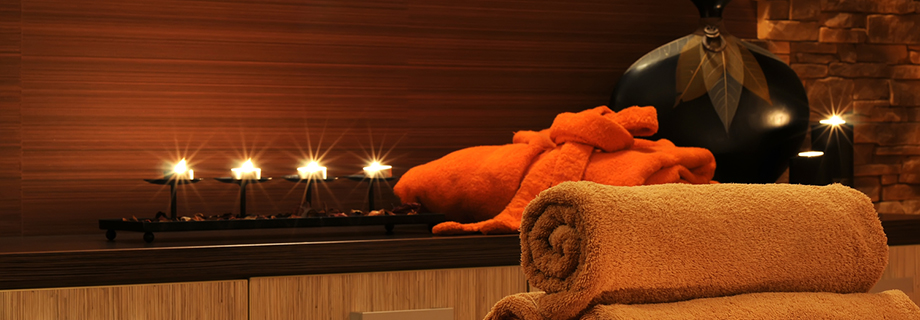Deep Tissue Massage by Habileny. Massage License # NVMT.7954.
What is Deep Tissue Massage by Habileny?

Whether you’re an athlete with a daily high demand placed on your body or recovering from an injury or illness, deep tissue massage likely has some benefits to offer you. Massages have been utilized for thousands of years throughout the world to lower both physical and psychological stress. And today, research continues to show that whether used alone or in conjunction with other treatments, massage therapy is an effective way to help treat common conditions like arthritis, anxiety and chronic lower back pain.
The primary goal of deep tissue massage is to reduce pain and discomfort, while improving the body’s ability to heal itself. Deep tissue massages are not only relaxing. They also help “lengthen and release muscles” that frequently feel tense and get stuck in uncomfortable holding patterns.
Deep tissue massage involves manipulation of the deep layers of tissue in the body, including the fascia (the protective layer surrounding muscles, bones and joints) and other supportive tissue that make up the muscles and joints. Compared to other popular massage techniques, including Swedish massage or acupressure, which tend to be lighter in pressure and can involve moving the body into certain positions, deep tissue massage is usually slower and firmer.
A person receiving a deep tissue massage usually lays on the stomach or back in one position, while deep pressure is applied to targeted areas of the body. The massage is beneficial mostly because it helps stimulate blood flow and relieve muscle tension, while at the same time lowering psychological stress.
Most deep tissue massages normally focus on major muscle groups, such as the neck or lower back, along with joints and tendons that are susceptible to straining or injuries. Certain areas of the body that tend to tense up in times of stress, including the shoulders, neck and hips, can often benefit the most from this type of deep manipulation. Many people consider “sports massages” to be a form of deep tissue massage, which involves physical treatment primarily to neuromusculoskeletal systems to treat pain and disability, improve muscle recovery and joint mobilization, and prevent injuries.
Manipulative approaches to naturally treating pain and other health problems have been utilized for over 3,000 years, dating back to Ancient Egyptian and Chinese civilizations. Pressure massages were used to improve “Qi” (life force or energy), detox the body and promote better liver function, which today can be explained through the process of activating the lymphatic system.
Deep Tissue Massage by Habileny is a type of massage therapy uses firm pressure and slow strokes to reach deeper layers of muscle, tendons, and fascia. It's used for chronic aches and pain and contracted areas such as a stiff neck and upper back, low back pain, leg muscle tightness, sore shoulders, and other muscles.
Deep tissue massage by Habileny therapy is similar to Swedish massage, but the deeper pressure is beneficial in releasing chronic muscle tension. The focus is on the deepest layers of muscle tissue.
Techniques of Deep Tissue Massage by Habileny.
If you’ve ever received a massage that was done in a Swedish fashion, involving long strokes that moved along the lines of muscles, a deep tissue massage will probably feel like a bit of a different experience.
Deep tissue massages are usually “cross-grain,” moving against the muscles to relieve aches or pains rather than moving with them. This can sometimes feel a bit more painful as a result compared to standard “relaxation massages.” However, the pressure involved in deep massages is actually a good thing. It provides many of the benefits that this type of therapeutic massage has to offer. Deep tissue massages also tend to be slower-paced and longer than many other massages, ideally about 1.5 - 2 hours long, which gives bodily tissue enough time to warm up and then relax.
While some of the strokes may feel the same as those used in Swedish massage therapy, deep tissue massage isn't the same as having a regular massage with deep pressure. It's used to break up scar tissue and physically break down muscle "knots" or adhesions (bands of painful, rigid tissue) that can disrupt circulation and cause pain, limited range of motion, and inflammation. At the beginning of the massage, lighter pressure is generally applied to warm you up and prepare your muscles. Then, I apply specific techniques of deep tissue massage therapy.

The most common techniques of Deep Tissue Massage by Habileny include: Pressing, Stripping (deep, gliding pressure along the length of the muscle fibers using the elbow, forearm, knuckles, knees, and thumbs), Twitching, Stroking, and Friction (pressure applied across the grain of a muscle to release adhesions and realign tissue fibers).
You may be asked to breathe deeply as the massage therapist works on tense areas. After the massage, you may feel some stiffness or soreness, but it should subside within a day or so. Drinking water after the massage may help to flush the metabolic waste from the tissues.
Deep tissue massage is a technique that focuses primarily on the deeper layers of muscles and the fascia. Sometimes this technique involves the therapist using firmer pressure in order to reach these key areas and get them to release, which is why this particular massage is oftentimes recommended for people who are comfortable with a slightly more intense touch. However, deep tissue massage can also refer to gentle yet sustained pressure targeting the myofascial layer. The benefits of deep tissue massage are beyond question.
Benefits of Deep Tissue Massage by Habileny.
Deep tissue massage by Habileny usually focuses on a specific problem, such as chronic muscle pain, muscle sore, post workout recovery, injury rehabilitation, and the following conditions:
Low back pain
Recovery from injuries (e.g. whiplash, falls)
Repetitive strain injury (such as carpal tunnel syndrome)
Postural problems
Muscle tension in the hamstrings, gluts, IT band, legs, quadriceps, rhomboids, upper back
Osteoarthritis pain
Limited mobility
Sciatica
Sports concerns (runners, athletes, fitness and bodybuilders)
Tennis elbow
Fibromyalgia
Neck pain
According to Consumer Reports magazine, 34,000 people ranked deep tissue massage more effective in relieving osteoarthritis pain than physical therapy, exercise, prescription medications, chiropractic, acupuncture, diet, glucosamine, and over-the-counter drugs.
Deep Tissue Massage reduces chronic pain
The University of Maryland Medical Center reports that deep-tissue massage is more effective and affordable for relieving chronic pain than conventional medical remedies. Because deep tissue massage increases the flow of blood through the body, it helps reduce the inflammation that causes pain. Deep tissue massage can also help alleviate muscle tension that is often a side effect of chronic pain by loosening the tight tissue clusters.
Research published in an April 2014 issue of Manual Therapy found that deep tissue massage to posterior calf muscles, along with self-stretching exercises, helped reduce participants’ pain associated with plantar fasciitis. Deep tissue massage can be used for other conditions as well, such as fibromyalgia, tennis elbow or low-back pain, potentially providing some much-needed relief. Deep tissue massage also received a top ranking for fibromyalgia pain.
Deep Tissue Massage improves blood pressure and lower heart rate
Deep tissue massage helps ease stress and tension, which can have a beneficial effect on blood pressure. People who had a deep tissue massage saw their systolic pressure drop by an average of 10.4 mm Hg and their diastolic pressure drop an average 5.3 mm Hg, according to a study cited by the University of Maryland Medical Center.
Deep Tissue Massage boosts hormone system
Deep tissue massage can help increase the body's production of oxytocin and serotonin, the hormone that promotes happiness and good feelings. Oxytocin is the primary hormone responsible for sustaining social bonds in humans and increasing motivation for cooperative behaviors, which is why it’s often called the “cuddle hormone” and known to be released during hugs, birth, social bonding and from touch.
Deep Tissue Massage breaks up scar tissue
Deep tissue massages are often utilized following injuries to help break up newly forming scar tissue that can make recovery more difficult and lead to stiffness. Massage has been shown to help reduce inflammation and muscle spasms by stimulating blood flow, loosening up muscles to allow for more oxygen and also helping reduce the nervous system’s automatic stress response.
Following injury, and especially if it’s also a very stressful time, inflammation can prevent proper blood flow from reaching damaged tissue and can cut off vital nutrients and oxygen. This can cause toxins to accumulate around damaged tissue, which only increases swelling and pain. Some studies have found that even self-administered massage can help reduce pain associated with plantar fasciitis and other injuries.
Over time, deep tissue massage therapy can help break up and eventually erase scar tissue in the body. It does this by improving lymphatic circulation and drainage to improve flexibility and range of motion in the affected area. Scar tissue is often associated with ongoing pain and stiffness, so deep tissue massage can improve these symptoms. Massage therapy is often recommended for people who are recovering from surgery.
Deep Tissue Massage rehabilitates injured muscles
Deep tissue massage can be an effective treatment for injured muscles. Because it facilitates the movement of toxins from the muscles and helps stretch tight or twisted muscle mass, deep tissue massage can help promote healing. Because massage also helps relax muscles, it can reduce the pain caused by injuries, too. Deep tissue massage is frequently used to rehabilitate sports injuries.
Deep Tissue Massage reduces stress, anxiety and muscle tension
Inflammation caused by chronic stress and muscle tension can lead to worsened overall health, longer recovery time, reduced immune function and cardiovascular problems, such as high blood pressure. Studies have found that massage therapy can help lower cortisol levels and even boost production of the hormone called oxytocin, which relaxes the body and has soothing effects.

When you feel stressed out due to demands at work, home or both, deep tissue massage can help ease this stress in a healthy manner. This is important, as unresolved stress can do major damage to mental and physical health; an estimated 60 to 80 percent of doctor’s office visits are stress-related, as noted in a 2003 study in the Journal of the National Medical Association. For those people who suffer from chronic stress, and all of its various, possible side-effects like tension headaches, rigid shoulders and tight muscles; deep tissue massage can be a relief. During a session you can let it all go and give in to the healing. Once renewed and revitalized you'll be able to face your challenges more equitably.
Several mechanisms for deep massage’s natural stress-relieving effects include its ability to dilate blood vessels and also lower activity of the limbic system (including the hypothalamus), which is responsible for autonomic nervous system regulation and cortisol secretion. Massage has been shown to improve relaxation by boosting activity of the parasympathetic nervous system, as measured by heart rate, blood pressure and heart rate variability.
Deep Tissue Massage makes movement easier
Scar tissue forms when an area of the body is injured and heals. Although the most common scars are those that result from a visible cut, sometimes they occur deeper in the body, such as when you damage muscles, ligaments or tendons. It is this type of scarring that deep tissue massage can help resolve, making it easier to move and promoting greater range of motion. People often notice improved range of motion immediately after a deep tissue massage.
Improves athletic recovery and performance
Research published in the Journal of Sports Medicine and Physical Fitness reported findings of a positive trend for deep tissue massages in regard to improved athletic recovery and performance. The most beneficial type of deep tissue massage for athletes is considered to be “sports massage,” which is commonly performed prior to athletic events to help warm the body and prevent injuries or immediately after to improve recovery.
The report showed that the science of sports massage has become of growing interest to athletes, athletic trainers, coaches and sports physiologists. Studies show that deep tissue massages can help improve lactate clearance, delayed onset of muscle soreness, muscle fatigue, injury prevention and injury treatment.
The researchers also note there are psychological benefits for athletes receiving massages, which other research shows can include improved focus and confidence. Although more research is still needed on a long-term scale, both tissue healing and the psychological effects of massages are areas that seem promising for both professional and recreational athletes.
Deep Tissue Massage reduces arthritis symptoms
According to the Arthritis Foundation, massage is often used to relieve common symptoms of many types of arthritis, including chronic joint pain, stiffness, anxiety, limited range of motion in joints and trouble sleeping. Firm massages can be used daily for natural relief, whether performed by a professional or by the patient themselves.
Research shows that firmer massages with more pressure can result in a significant reduction in arthritis pain compared to lighter massages. Lighter massage tends to be arousing (not relaxing) because often the heart rate goes up. However, with moderate pressure, heart rate usually goes down, and this stimulates relaxation and reduced tension.
Deep Tissue Massage can help with labor pain and delivery
Many pregnant women now turn toward alternative/complementary medicines for helping control labor pain and supporting a natural birthing process like the Bradley Method. In fact, surveys show that the most common alternative therapies recommended during pregnancy are massage therapy, acupuncture and chiropractic therapies.
Some research has shown that massage therapy can be effective during pregnancy due to its anxiety-lowering effects, and women who receive massages before and during labor tend to experience decreased depression, anxiety, and leg and back pain. Results from one study found that women who received massages prior to and during labor had significantly less pain, plus their labors were on average three hours shorter and required less need for medication.
Because cortisol levels decrease following massage and blood flow is improved, pregnant women are also better protected from excessive fetal activity and risk for premature delivery.
Will a Deep Tissue Massage hurt?
At certain points during the deep tissue massage, you may feel some discomfort or even some pain as I work on areas where there are adhesions or scar tissue. You should always tell me if you feel pain during the massage. I can adjust the technique or further prep the tissues if the superficial muscles are tense. Pain isn't necessarily good, and it's not necessarily a sign that the massage is working. In fact, your body may tense up in response to pain, making it harder for me to reach deeper muscles.
Precautions
Deep tissue massage may not be safe for people with blood clots (e.g. thrombophlebitis or deep vein thrombosis), due to the risk that they may become dislodged. If you have blood clots or are at risk of forming blood clots, it's essential that you consult your doctor first. If you've had recent surgery, chemotherapy, radiation, or any other medical procedure, it's wise to check with your doctor before starting massage therapy. Some people with osteoporosis should avoid the deeper pressure of this type of massage.
Massage should not be done directly over bruises, inflamed or infected skin, skin rashes, unhealed or open wounds, tumors, abdominal hernia, fragile bones, or areas of recent fractures.
If you have any condition, it's important to consult your primary care provider beforehand to find out what type they recommend. For example, people with certain conditions, such as ankylosing spondylitis, may not be able to tolerate the pain of a deep tissue massage.
Pregnant people should check with their doctors first if they are considering getting a massage. Deep tissue massage (or any strong pressure) should be avoided during pregnancy, but your doctor may suggest a massage therapist trained in pregnancy massage.
